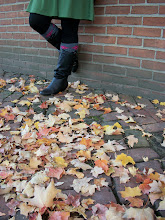In 1796, Congress appropriated the Refugee Lands for individuals who had supported the Colonial cause in the American Revolution. By 1802, an American Revolution veteran named John McGowan claimed 328 acres, most of what would become the German Village. As German immigrants arrived, McGowan sold tracts of land to them. By 1814, the German Village found its roots, originally called "die alte sud ende" (the old south end), and German immigrants contributed to building the first statehouse.
By 1865, one-third of Columbus's population was German and the community was flourishing. They built up the local neighborhood, including many businesses, schools, and churches.
The area was in serious decline throughout the first half of the 20th century, however, due to anti-German sentiment during World War I. Schiller Park was renamed Washington Park. The anti-German sentiment fueled by the media was so bad that in 1918 German books were burned on Broad St., and at the foot of the Schiller statue. Despite the hatred, the German-American community would produce Columbus's finest war hero, and one of America's, from World War 1, Captain Eddie Rickenbacker, for whom Rickenbacker International Airport in southern Columbus is named for.
Further decline occurred later due to the closing of the local breweries during Prohibition, another response to the anti-German sentiment. After the war, the south end was zoned for manufacturing, leading to the erosion of the area's residential feel. In World War Two, the street car tracks and wrought iron fences were confiscated for the war effort. By the 1950s, the area had become a slum. The city then demolished one-third of the neighborhood.
Nearing complete destruction, Frank Fetch defied the common wisdom and purchased a house on Wall St., determined to rebuild the neighborhood. Fetch would create the German Village Society. In June of 1960, the society hosted the first Haus und Garten Tour, which attracted visitors and the local media to eight restored homes, and two gardens. Today the tour is one of the city's most popular events.
Concerned citizens managed to save its historic architecture from demolition in the 1960s by successfully lobbying for a local commission, the German Village Commission, to have power over external changes made to buildings, and by getting the area listed on the National Register of Historic Places in 1975.[7] The German Village Society presently has over 1,000 preservationists dedicated to maintaining the historic quality of the buildings and neighborhood, and German Village is currently considered one of the most desirable areas to live in the city, if not the premiere place in Columbus to live.[8]
More than 1600 buildings have been restored since 1960, and it is credited as one of the most premiere restoration districts in the world.[9] By the 1980s, the restoration was near complete. Today it is the largest privately funded historic district on the National Register of Historic Places.[10]
The average home price in the neighborhood is $377,450.[11] Several homes in the neighborhood price at over $1 million, including a 5200 square foot home that sold in August 2007 for $1.5 million.[12] Another home, which was purchased for $1.4 million in 2006, boasts an underground tunnel linking the garage with the main house, which also serves as an art and wine cellar.[13]
-Wiki







